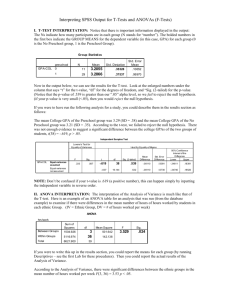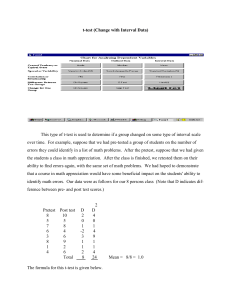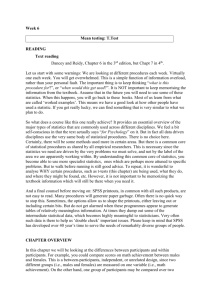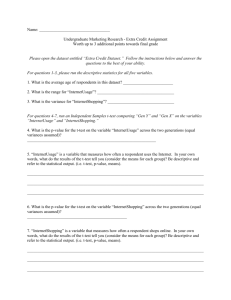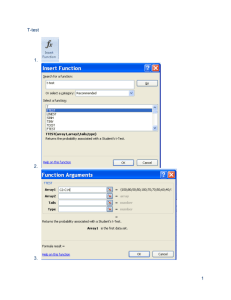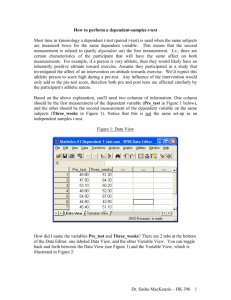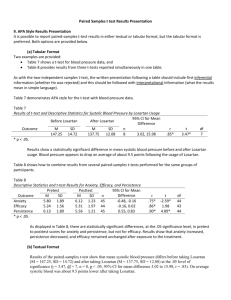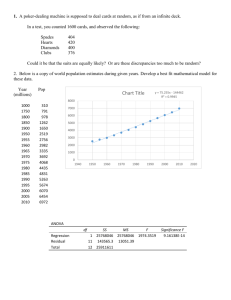Two-independent samples t-test
advertisement
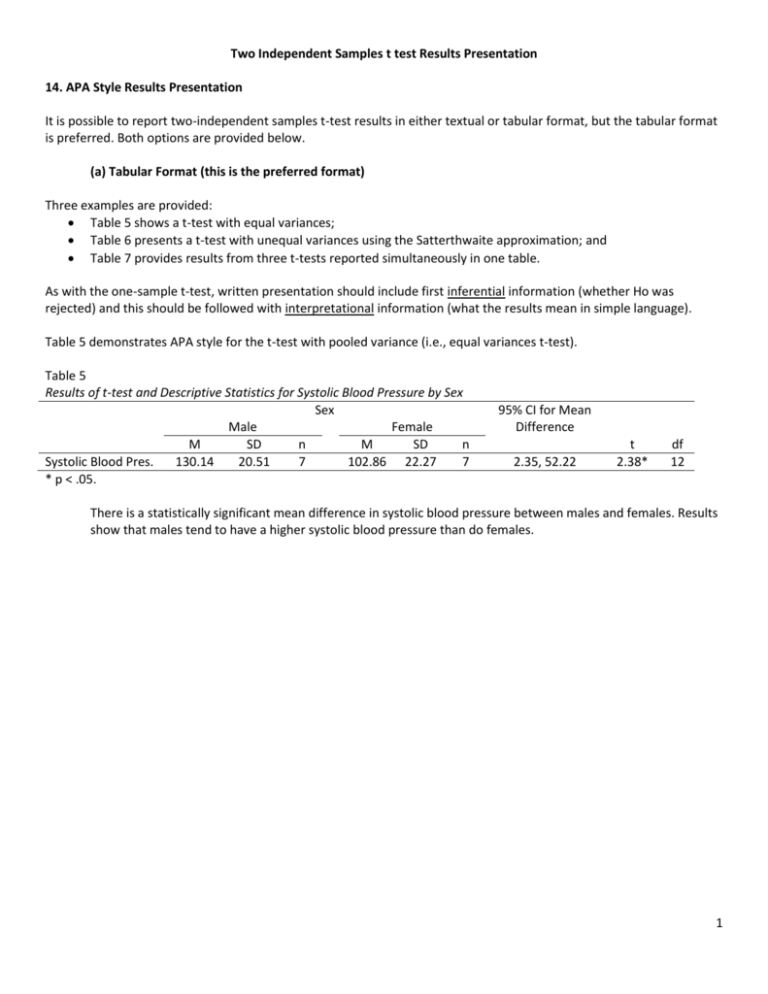
Two Independent Samples t test Results Presentation 14. APA Style Results Presentation It is possible to report two-independent samples t-test results in either textual or tabular format, but the tabular format is preferred. Both options are provided below. (a) Tabular Format (this is the preferred format) Three examples are provided: Table 5 shows a t-test with equal variances; Table 6 presents a t-test with unequal variances using the Satterthwaite approximation; and Table 7 provides results from three t-tests reported simultaneously in one table. As with the one-sample t-test, written presentation should include first inferential information (whether Ho was rejected) and this should be followed with interpretational information (what the results mean in simple language). Table 5 demonstrates APA style for the t-test with pooled variance (i.e., equal variances t-test). Table 5 Results of t-test and Descriptive Statistics for Systolic Blood Pressure by Sex Sex Male Female M SD n M SD n Systolic Blood Pres. 130.14 20.51 7 102.86 22.27 7 * p < .05. 95% CI for Mean Difference 2.35, 52.22 t 2.38* df 12 There is a statistically significant mean difference in systolic blood pressure between males and females. Results show that males tend to have a higher systolic blood pressure than do females. 1 Table 6 demonstrates presentation of t-test results with unequal variances using the Satterthwaite approximation for degrees of freedom. This is the most common adjustment used in statistical software and the adjustment found in SPSS. Table 6 Results of t-test and Descriptive Statistics for Intrinsic Motivation by Instructional Feedback Opportunity Instructional Feedback Opportunity 95% CI for Mean Yes No Difference M SD n M SD n t df Intrinsic Motivation 4.24 0.27 7 3.10 1.41 12 0.23, 2.06 2.72* 12.33 Note: Satterthwaite approximation employed due to unequal group variances. * p < .05. Results of the t-test show a statistically significant mean difference in intrinsic motivation between students given an opportunity to provide instructional feedback and students not given such an opportunity. Students allowed to provide instructional feedback demonstrated greater average levels of intrinsic motivation when compared to their peers not allowed to provide instructional feedback. Table 7 shows how to combine results from several t-tests performed for the same groups. Table 7 Results of t-tests and Descriptive Statistics SAT Verbal, SAT Math, and GPA by Sex Outcome Group 95% CI for Mean Male Female Difference M SD n M SD n SAT-Verbal 463.81 98.89 45 532.21 101.23 44 -110.56, -26.24 SAT-Math 515.43 99.56 44 483.31 98.97 44 -9.95, 74.20 College GPA 2.71 1.32 45 3.16 1.16 44 -0.97, 0.07 * p < .05. t -3.22* 1.52 -1.71 df 87 86 87 There are statistically significant differences, at the .05 level of significance, between male and female college students in SAT verbal scores, but not with SAT mathematics or college GPA. Results show that females had higher verbal scores, but no statistical difference exists between males and females in terms of GPA or SAT mathematics scores. (b) Text Format Some may prefer to report t-test results directly within text especially if printed space is limited (such as due to per-page publication costs). Below is an example illustration this presentation approach. Results of the two-independent samples t-test shows that mean systolic blood pressure differs between males (M = 130.14, SD = 20.51, n = 7) and females (M = 102.86, SD = 22.27, n = 7) at the .05 level of significance (t = 2.38, df = 12, p < .05, 95% CI for mean difference 2.35 to 52.22). On average males tend to have higher systolic blood pressure than females. 2


